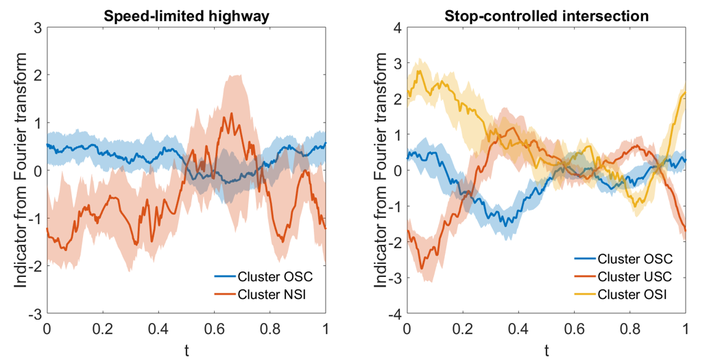Understanding driver response patterns to mental workload increase in typical driving scenarios
 Image credit: Yuan Liao
Image credit: Yuan LiaoAbstract
As vehicles become more complex and traffic increases, the associated mental workload of driving should increase, potentially compromising driving safety. As mental workload increases (as measured by the detection response time task), does how people drive (as assessed by driving performance and eye fixations) change? How does driving experience impact on such response patterns? To address those questions, data were collected in a motion-based driving simulator. Two driving scenarios were examined, a stop-controlled intersection (high workload-16 participants, 320 trials) and speed-limited highway (low workload-11 participants, 264 trials). In each scenario, in half of the trials, the participants were required to complete or not to complete a distracting secondary task. Hierarchical cluster analysis was used to identify driver response patterns. For highway driving, they are: (1) increased eye fixation variability and unchanged driving performance and (2) unchanged fixation variability and increased mean speed. For intersection driving, they are: (1) increased; (2) decreased fixation variability both with decreased speed (mean and variance); and (3) increased fixation variability with increased speed. Eye fixation variability was more strongly associated with increased mental workload than other driving performance statistics. Furthermore, in contrast to prior research, changes in driving performance and eye fixations were not necessarily correlated with each other as mental workload increased. Novice drivers exhibit higher gaze variability, and they are more prone to maintain vehicle control than experienced drivers.